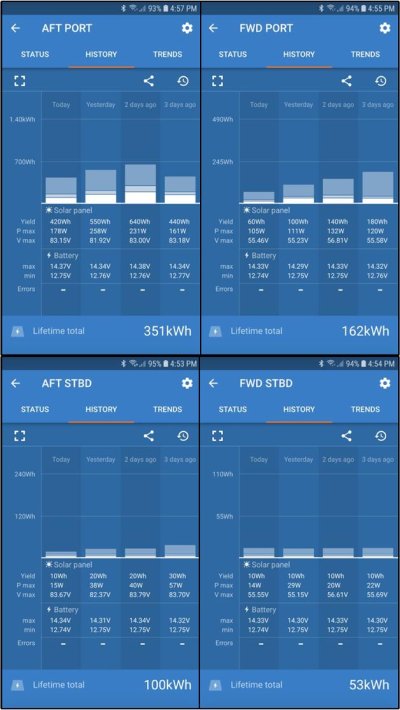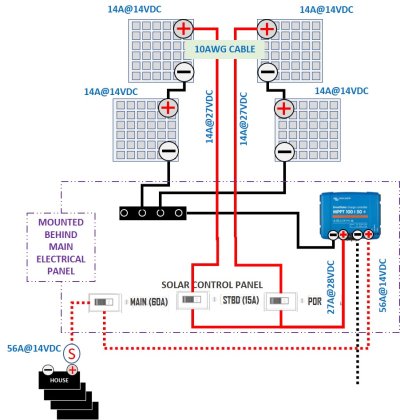Skeeter
Veteran Member
On my Bristol 42 I have 2 x 8D 1400CCA lead acid batteries designated Port and Starboard Engine and a 6D1100CCA designated Genset.
All batteries have an on/off switch.
The port and stbd start batteries double up as house batteries and I can switch between them or combine them as required for house power.
When away from shorepower I normally keep the Genset battery isolated when not in use to serve as a back up for starting if I run down my Start batteries.
I can run the genset for charging but want to get away from this so I'm looking at installing a 400watt Renology solar system.
The only real power draws I have are the Fridge/ freezer (200W 115AC) which I power using a 1500W invertor (wired to stbd house battery), F/W pump, Sump pump, occasional TV/ laptop, and charging for phones, cordless power tools, etc. I know there are all kinds of calculators out there but wondered if anyone has experience of a similar setup and can offer any good advice.
The current batteries are fairly new so i intend to keep them for now and maybe change them for 6V golf cart batteries as and when they need replacing.
Thanks, Steve
All batteries have an on/off switch.
The port and stbd start batteries double up as house batteries and I can switch between them or combine them as required for house power.
When away from shorepower I normally keep the Genset battery isolated when not in use to serve as a back up for starting if I run down my Start batteries.
I can run the genset for charging but want to get away from this so I'm looking at installing a 400watt Renology solar system.
The only real power draws I have are the Fridge/ freezer (200W 115AC) which I power using a 1500W invertor (wired to stbd house battery), F/W pump, Sump pump, occasional TV/ laptop, and charging for phones, cordless power tools, etc. I know there are all kinds of calculators out there but wondered if anyone has experience of a similar setup and can offer any good advice.
The current batteries are fairly new so i intend to keep them for now and maybe change them for 6V golf cart batteries as and when they need replacing.
Thanks, Steve

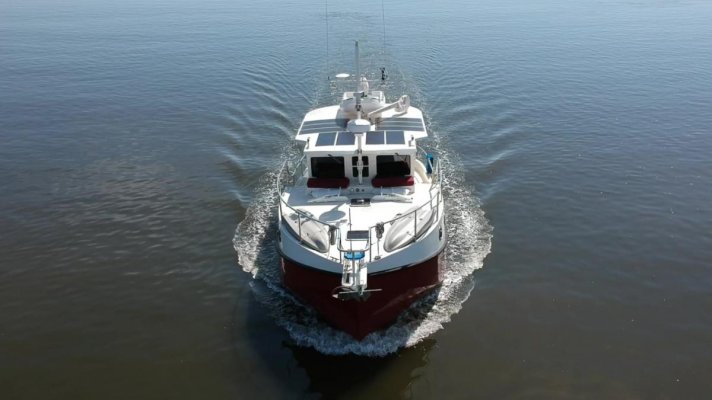
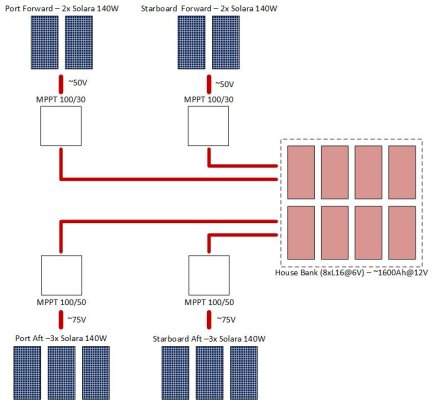
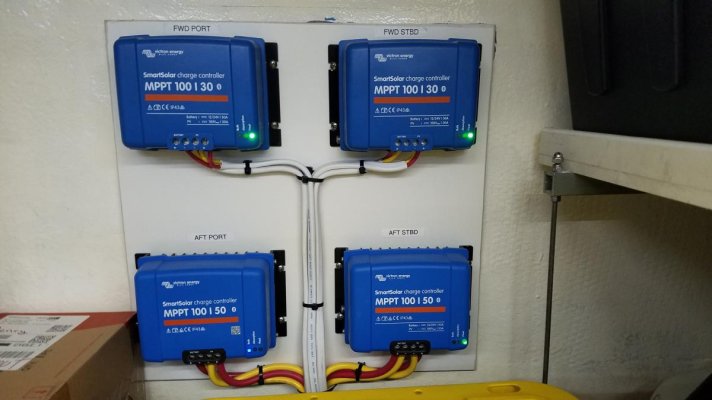
 , but you can see the different float voltage times, etc. for each.
, but you can see the different float voltage times, etc. for each.